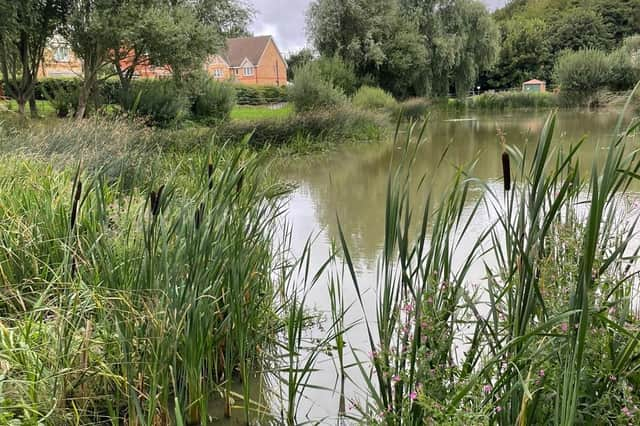How blue-green infrastructure benefits people and the environment


One way to contribute to climate change resilience and improvements in our natural environment as part of the development process is through the conservation, enhancement, and creation of Blue-Green Infrastructure.
Blue-Green Infrastructure (BGI) is an all-encompassing term to describe the network of natural and semi-natural features within and between our villages, towns, and cities, essentially the greenspaces that exist between built environments that allow access to nature.
The ‘blue’ elements include ponds, rivers, canals, wetlands, and water management systems; and the ‘green’ elements include trees, parks, fields, and woodland. These networks range in scale from hedges, street trees, and private gardens to parks, river systems, woodlands, and wetlands.


As well as an extremely important factor in the fight against climate change and improving the diversity and health of the natural environment, BGI plays an essential role in maintaining our human health and wellbeing. Indeed, through the last two years of the global pandemic we have gained a greater understanding and appreciation of the need for green spaces around our homes, particularly at a local level.
Helping people and the planet
BGI is a multi-functional infrastructure, providing numerous benefits to humans and the environment alike.
When well designed and maintained it has the capacity to contribute to community resilience and mitigate climate change impacts by, for example, providing sustainable flood mitigation solutions. It can also positively contribute to air quality, water quality, biodiversity improvements and provide access to nature and recreation opportunities whilst greatly improving the setting of our built environment.


Building to boost biodiversity
There continues to be a demand for a greatly increased housing supply in this country and sustainability is a key consideration in delivering new housing developments.
In recent years, much of the focus has been on the creation of energy efficient housing with reduced carbon emissions. However, there is an opportunity for the housebuilding industry, assisted by landscape architects, to consider wider aspects of sustainability by integrating BGI into the design of new development and building sustainable places to live that are not only resilient to the impacts of climate change, but also improve biodiversity and deliver wider health and well-being benefits to residents.
The creation of new development rich with BGI has positive economic benefits also. In considering the integration of BGI from the early stages of design, a new development is more likely to meet local planning policy targets and therefore improve the likelihood of acquiring planning permission. The introduction of ‘green’ landscape features, such as above ground drainage solutions and the inclusion of trees and green spaces are often more cost effective to install than ‘hard’ landscape elements such as underground drainage and paved areas. Attractive ‘green’ settings can also have a positive impact on property prices and help to attract businesses and further investment to an area.
BGI brings success
At Pegasus Group we are seeing an increased emphasis on the identification of existing key landscape features early in the development design process, and a consideration as to how they can be retained, enhanced, and integrated into new development schemes as part of multi-functional network of Blue-Green Infrastructure.
These networks form part of the development site areas and also link back into the wider landscape and adjacent settlements providing valuable connectivity and benefits to local residents, wildlife and the overall success of the project.